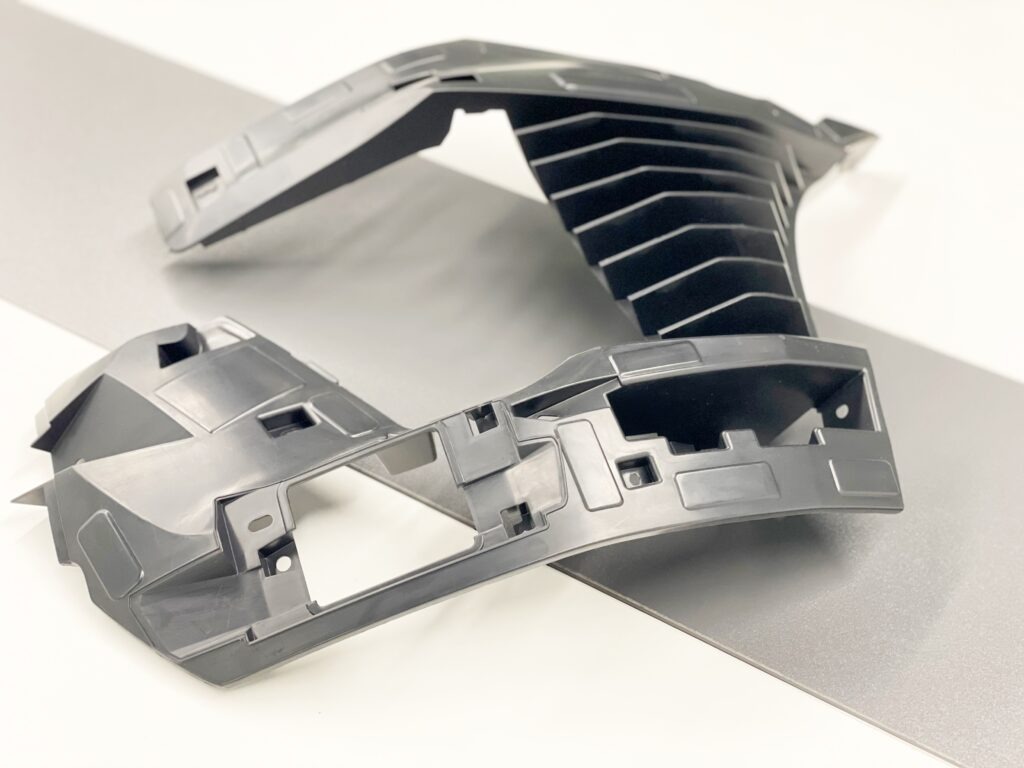When you look at a plastic part on your car dashboard, a consumer electronic device, or even a simple household appliance, it might seem like a straightforward piece of engineering. However, what you see on the surface is just the tip of the iceberg. The world of plastic injection moulded parts is filled with hidden intricacies, where much of the design work goes unnoticed by the end user but is crucial for the part’s fit, function, and manufacturability. This complexity is not just incidental but is a direct result of a meticulous process known as Design for Manufacturing (DFM).
The Visible and the Invisible: A Dual Purpose
At first glance, many plastic parts appear to be designed solely for aesthetic appeal or user interaction. For instance, the sleek buttons on a remote control or the ergonomic handle of a kitchen tool. However, behind these visible surfaces lies a world of features that are purely functional. These hidden elements are essential for ensuring that the part not only looks good but also fits perfectly with other components, withstands the stresses of use, and can be manufactured efficiently.
1. Structural Integrity and Support: One of the primary reasons for the hidden complexity in injection moulded parts is to provide structural integrity. Internal ribs, gussets, and bosses are often included in the design to reinforce the part, ensuring it can handle the mechanical loads it will encounter during use. These features are strategically placed where they do not interfere with the part’s outward appearance but are critical for preventing warping, cracking, or failure.
2. Assembly and Fitment: The hidden portions of an injection moulded part are also crucial for ensuring proper fitment with other components. Snap fits, clips, and interlocking features are often moulded into the part to allow for easy assembly without the need for additional fasteners. These elements are carefully designed to ensure that parts align perfectly during assembly, which is vital for both the function and the longevity of the final product.
3. Manufacturing Considerations: Design for Manufacturing (DFM) principles play a significant role in determining the complexity of injection moulded parts. Engineers must consider factors like material flow, cooling rates, and the ejection process when designing a part. For example, a part might have a series of internal channels or undercuts that are not visible from the outside but are necessary to prevent defects like sink marks or warping. These features are also optimized to reduce cycle times and minimize waste, which is crucial for cost-effective production.
The Role of DFM in Injection Moulding
DFM is a critical aspect of designing injection moulded parts, as it bridges the gap between the designer’s vision and the realities of manufacturing. The goal of DFM is to ensure that a part can be manufactured with high quality, within budget, and on schedule, without compromising its intended function or aesthetics.
1. Material Selection: One of the first steps in DFM is selecting the appropriate material for the part. Different plastics have varying properties, such as shrinkage rates, flow characteristics, and thermal stability. Engineers must choose a material that meets the part’s functional requirements while also being easy to mould. For example, a part that needs to withstand high temperatures might require a high-performance polymer, which will also influence the mould design and cooling process.
2. Mould Design: The design of the mould itself is a critical aspect of DFM. Moulds must be designed to allow for easy filling of the cavity, proper cooling, and efficient ejection of the part. This often involves creating complex geometries within the mould, such as gates, runners, and cooling channels, which directly impact the quality of the final part. In some cases, multiple moulds may be required for a single part, especially if it has intricate features or undercuts that cannot be moulded in a single operation.
3. Tolerance and Dimensional Control: Achieving tight tolerances is often a challenge in injection moulding, especially for complex parts. Engineers must account for material shrinkage, thermal expansion, and other factors that can affect the final dimensions of the part. This is where DFM becomes crucial; by optimizing the design for manufacturability, engineers can ensure that the part meets its dimensional requirements without requiring costly post-processing or rework.
The Invisible Engineering Behind Visible Success
The next time you hold a plastic part, remember that what you see is only a fraction of the engineering effort that went into its creation. The visible portion is designed to meet user needs, but the hidden complexity is what makes the part function properly and ensures that it can be manufactured reliably and efficiently. Through the careful application of DFM principles, engineers can create parts that not only look good but also perform well in their intended applications.
Plastic injection moulded parts are a testament to the intricate and often invisible work that goes on behind the scenes in the world of engineering. From hidden structural supports to complex internal features designed for manufacturing, every detail is meticulously crafted to ensure that the final product is both functional and manufacturable. Understanding this hidden complexity gives us a greater appreciation for the art and science of injection moulding and the engineering expertise required to bring these everyday parts to life.


